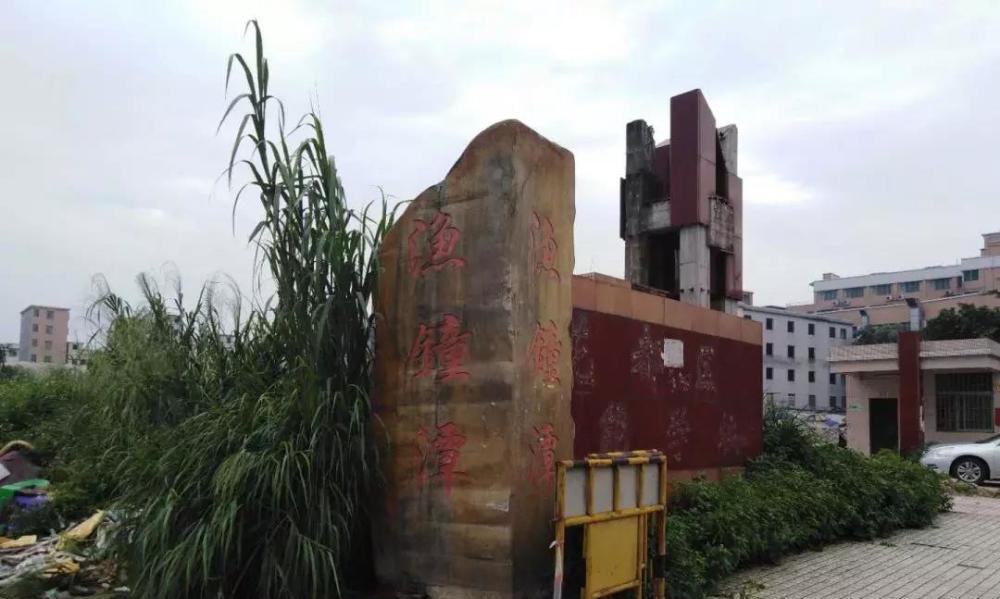Wang Yu Zhong Guichao
In Xinhua Street Xinjie Village, on the side of the South China Tunnel, on the west side of the railway, a large stone is still erected, and the three characters of "Yuzhongtan" are written on it.

Let us turn back the clock 82 years, an era in which the Chinese nation was humiliated. On July 7, 1937, the Japanese army launched the "Lugou Bridge" incident, and the war of aggression against China began. In the winter of 1938, the Japanese army forcibly occupied Yuzhongtan. In this area, there is no evil to kill and loot.
According to local elders, at that time, the Japanese army entrenched in Yuzhongtan, Xinhua, strangled the railway, stationed a garrison, and they forcibly drove the villagers away. The whole village was driven to a small village near the edge of zhong village. However, the Japanese army set up a base camp here in Yuzhongtan. So, why are the Japanese troops stationed here?
Old train
The reason is simple, there is a New Street train station. Occupying this place is equivalent to choking the main traffic road. But the people here have suffered.
In 1908, the Cantonese-Han Railway was put into use, and Xinjie was adjacent to the railway, and the Xinjie Railway Station was born at that time. The name of the station took 87 years.
Xinjie Railway Station was renamed Huadu Railway Station on July 1, 1995 with the approval of the Ministry of Railways, and the new station name was officially settled in 1996. On September 15, 1999, it was renamed guangzhou north railway station again.
The Japanese built a lookout fort at the mouth of the village of Xinjie, which is said to be able to fire artillery into the village of Qishan, three kilometers away, and a fort at Wanggangling. Barbed wire was set up around the entire village, with only two road crossings in and out.
The Japanese guarded the fortress with guns, stipulating that the villagers could only go out at 9 a.m., but they had to return at 4 p.m., and when they came back late, they would shoot. For a time, New Street was shrouded in terror.
The Japanese army arbitrarily raped and plundered the village and shot at the people at will. At that time, more than 10 people were killed by knives and guns, and more than 40 houses were demolished.
According to the "Village Chronicle of Xinjie Village", the Japanese army killed more than 10 people in Qingyuan County in this area, one was in the huang surname Lijiazhuang, killing more than 10 people in Qingyuan County; the other was in the Xinjie Weifeng Longyao Kiln, killing 6 people from Zengcheng County, after killing, the Japanese army pushed the bodies down the well; the third was to kill many people in Sanhua Village in the open space near the railway bridge in Yuzhongtan.
Within the military blockade line, large areas of rice fields were deserted at that time, because they were all in the firing circle of the Japanese army day and night, and no one dared to go down to the ground to cultivate the fields. The villagers have no place to live, and some courageous people often smuggle the blockade line to Guangzhou at night to sell salt, commonly known as "walking the boundary line". Once discovered by the Japanese, there is only one way to die. More than 350 people were captured beheaded or shot on the spot.
According to the "Village Chronicle of Xinjie Village", in the winter of 1941, the Japanese troops stationed in Yuzhongtan often plundered cattle, pigs, chickens and ducks in the village, and sometimes ran to the neighboring Village of Bi to search, and once because they robbed too little, they were ashamed and angry, and they brutally set fire to about 8 houses and a bamboo shed warehouse, burning one person on the spot and shooting and killing more than 10 people.
The Japanese army committed heinous crimes in the area of Yuzhongtan, which is really hard to describe. It was not until 1945, when the Japanese army finally surrendered, that this history of blood and tears was declared over.